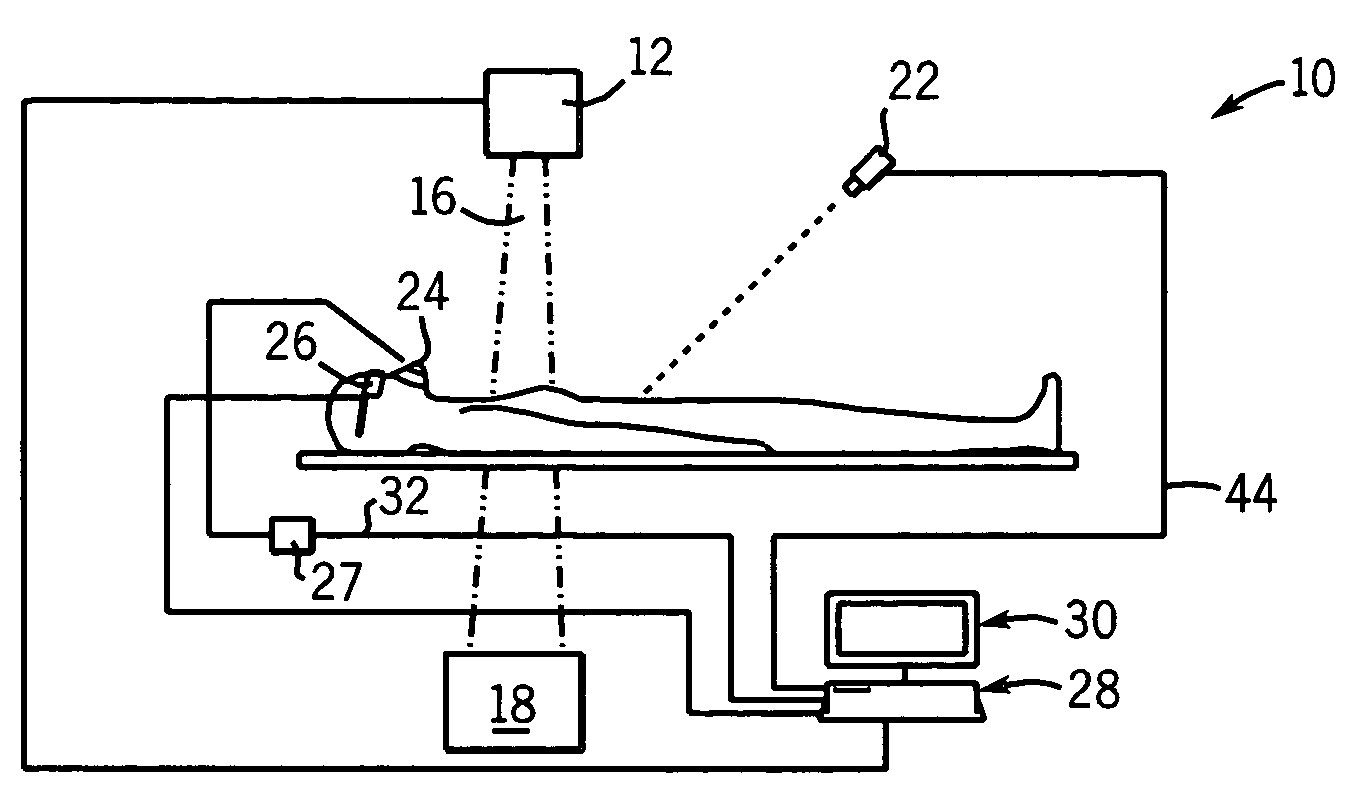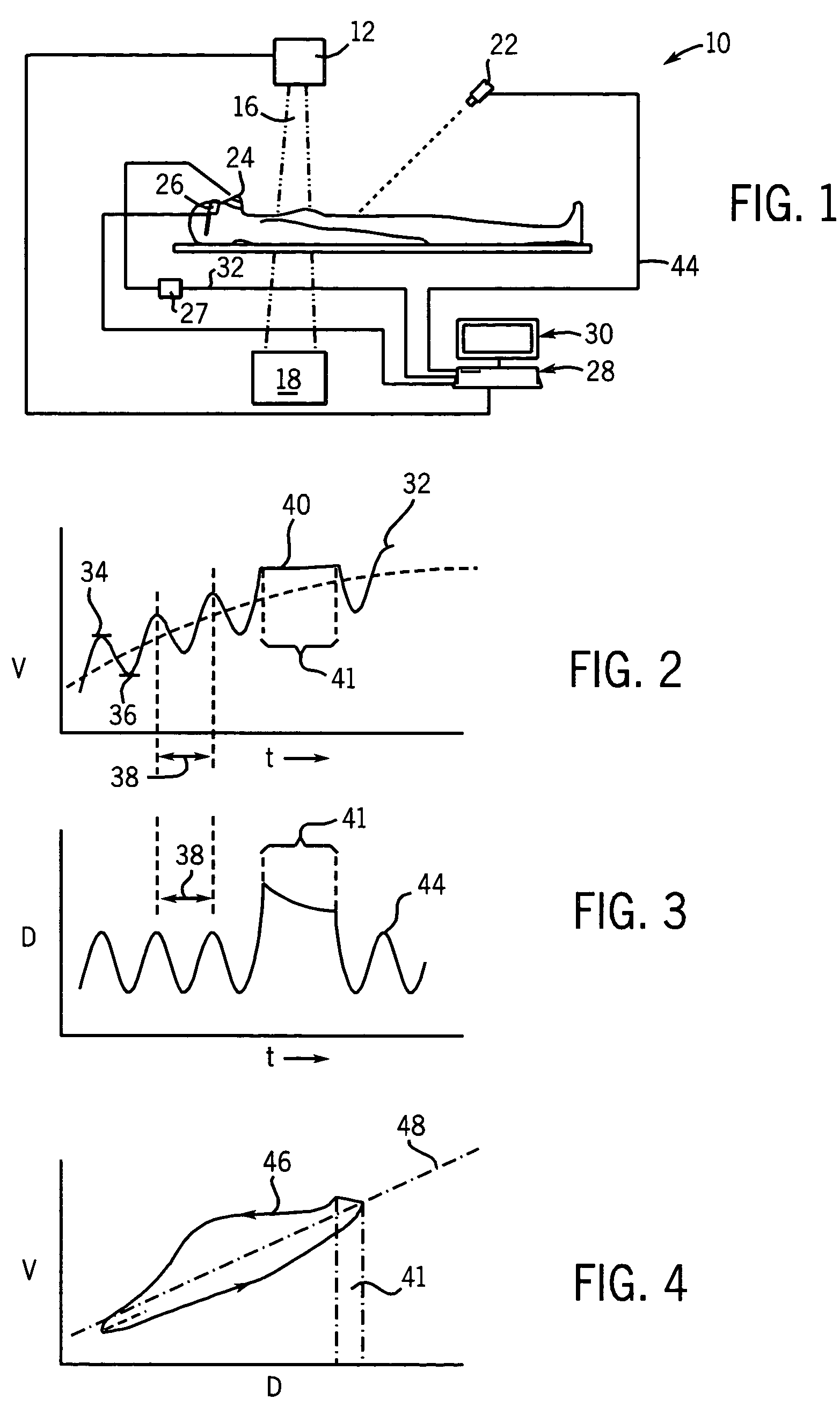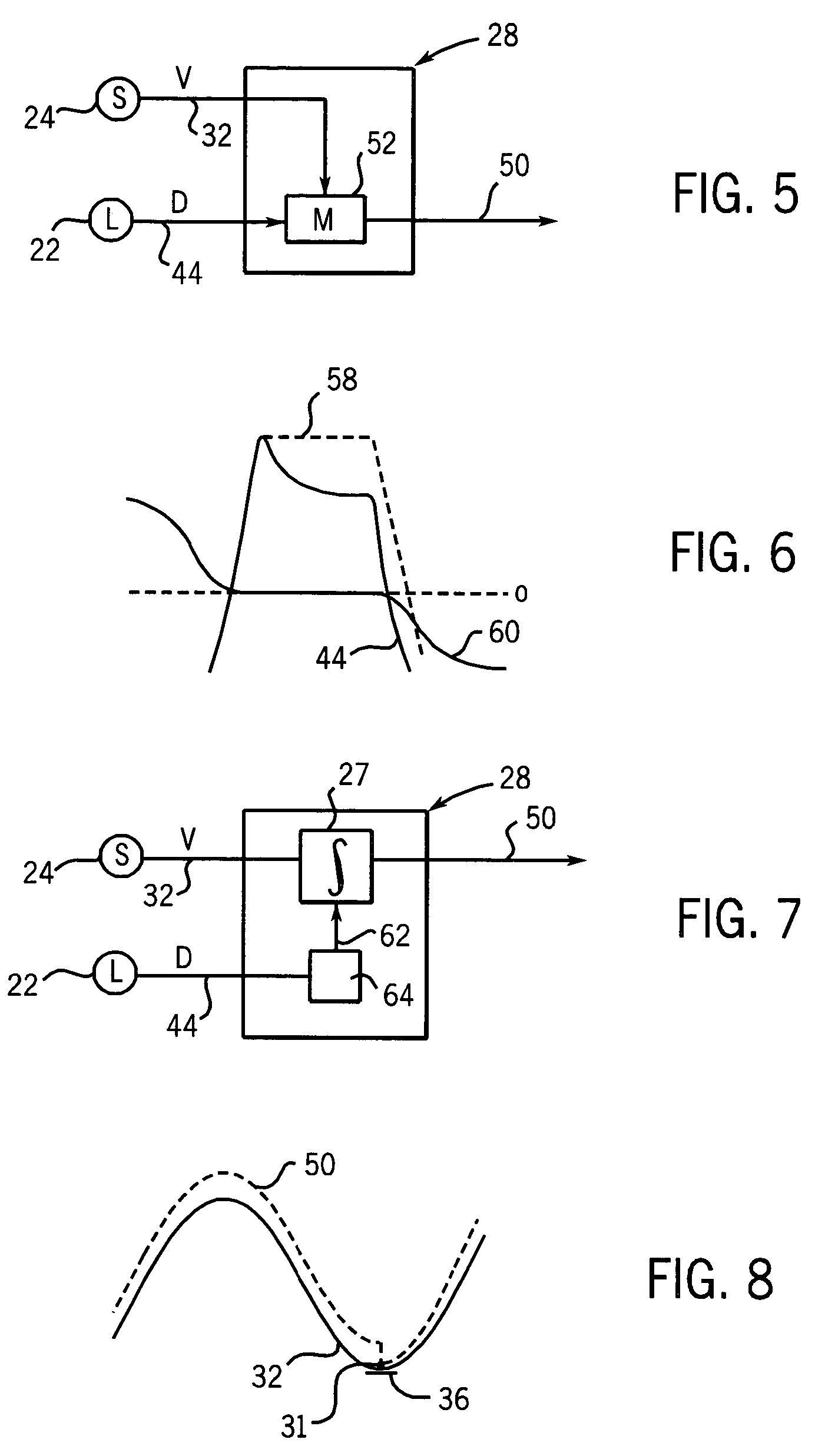Combined laser spirometer motion tracking system for radiotherapy
a motion tracking and laser spirometer technology, applied in radiation therapy, medical science, therapy, etc., can solve the problems of signal drift, difficult to reproduce the same measurements, and significant disadvantages of the late system
- Summary
- Abstract
- Description
- Claims
- Application Information
AI Technical Summary
Benefits of technology
Problems solved by technology
Method used
Image
Examples
first embodiment
[0061]In a first embodiment, the model 52 receives the lung volume signal 32 and the chest displacement signal 44 to deduce the slope of the slope line 48. The chest displacement signal 44 is then scaled by the slope to translate the chest displacement into units of lung volume but without drift as the corrected respiration signal 50.
[0062]Referring now to FIG. 6, when breath-hold measurements are required, the model 52 may provide for breath-hold-detection to hold corrected respiration signal 50 constant when a breath-hold is detected. In one embodiment, the breath-hold detection may monitor the laser chest displacement signal 44. Breath-hold can be detected from the shape of the chest displacement signal 44 in which the derivative of this signal changes abruptly at the beginning and ending of breath-hold or from spirometer signal 60 in which the flow reading is zero during breath-hold. When a breath-hold is detected, the corrected respiration signal 50 is held to a constant value ...
second embodiment
[0063]In a second embodiment, the correlation curve 46 may be captured as a lookup table fitted to a nonlinear equation and used to map arguments of the chest displacement signal 44 to values of lung volume according to the function captured by the correlation curve 46. By detecting an instantaneous change in the input of the chest displacement signal 44 and using the direction of this change to apply the chest displacement signal to either the upper or lower portion of the correlation curve 46, respectively, a model 52 that accommodates hysteresis can be obtained. The use of correlation curve 46 to convert the chest displacement signal 44 into values of lung volume effectively eliminates the decay artifact in the chest displacement signal 44 because the flat portion of the correlation curve 46 during breath-hold period 41 holds lung volume output constant during the breath-hold period 41. The correlation curve 46 may be an average of a number of breathing periods 38 after baseline ...
PUM
 Login to View More
Login to View More Abstract
Description
Claims
Application Information
 Login to View More
Login to View More - R&D
- Intellectual Property
- Life Sciences
- Materials
- Tech Scout
- Unparalleled Data Quality
- Higher Quality Content
- 60% Fewer Hallucinations
Browse by: Latest US Patents, China's latest patents, Technical Efficacy Thesaurus, Application Domain, Technology Topic, Popular Technical Reports.
© 2025 PatSnap. All rights reserved.Legal|Privacy policy|Modern Slavery Act Transparency Statement|Sitemap|About US| Contact US: help@patsnap.com



